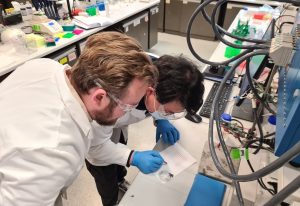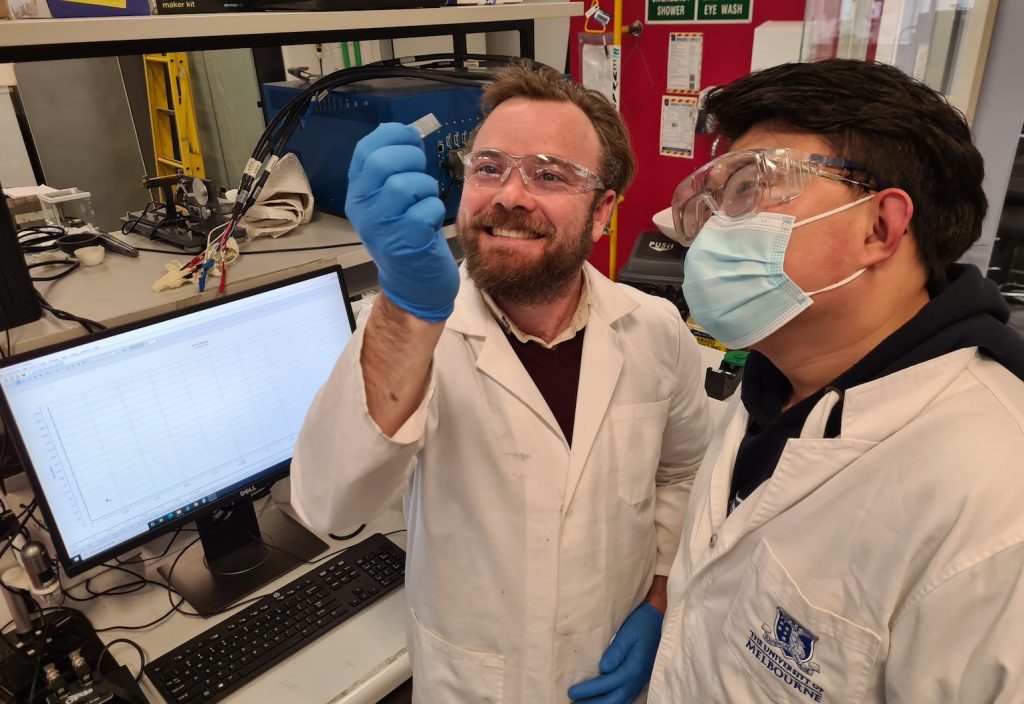It’s a costly and cumbersome exercise to purify water in remote locations, but that could soon change as chemical engineers have developed a special pencil from 2D crystals to treat contaminated water.
Turning contaminated water into safe drinking water usually requires access to sophisticated treatment devices.
While this might be possible in many urban areas, millions of people living in remote regions are often left without access to potable water.

Dr Peter Sherrell and his team of chemical engineers at the University of Melbourne’s Faculty of Engineering and Information Technology have been working hard to conceive a solution.
They’ve developed a pencil composed of 2D crystals — a family of around 2000 crystals that function as water cleaning catalysts — to increase the rate of a chemical reaction that’s required to break down pollutants and kill bacteria. These crystals are unique, as while they have distinct chemistries and break down different pollutants, their 2D nature means they can all be processed in similar ways.
With the support of $40,000 initial funding from the philanthropic CASS Foundation, the research could improve access to safe and clean drinking water in some of the world’s most remote areas.
“Scientists have developed a lot of novel catalysts that can help purify water, but engineering these catalysts into components that can be shipped, transported and used easily is paramount,” said Sherrell.
“Chemical engineering is playing a massive role in addressing major global challenges by developing tools, technology and processes to transfer from the lab into industrial settings and society.”
Crystallising the concept
Sherrell’s fascination with 2D crystals was first piqued when he was conducting research at the Imperial College London.
“We were looking at 2D crystals as a form of energy storage, and we found that if we mixed two different 2D crystals together, they worked really well as catalytic materials,” said Sherrell.
When he returned to Melbourne in 2018, Sherrell’s understanding of 2D crystals led him to pose the question: ‘How can we use these materials to improve water treatment?’
“One of the big issues with water purification is that so many different reactions need to happen. There are a number of different targets that need to be hit: the catalysts need to break down microplastics, organic pollutants such as pesticides and heavy metals, and they also need to kill bacteria. Each one of these targets needs a different catalyst to remove.”
Sherrell saw that advanced 2D crystal technology could pave the way for a simpler and more efficient process.
“We know lots of 2D crystals are great for catalysis, but we don’t have a pathway to get these catalysts to where they’re needed,” said Sherrell.
“I thought 2D crystals could have a really big impact. We could use one approach to make individual catalysts to process all of these different pollutants.”
To do this, the team has broken down powders of different 2D crystals into individual 2D layers floating in a solution.
“The key technology in making a 2D pencil comes next, which involves assembling these floating 2D layers into an ordered structure, like CDs stacked in a tower. 2D crystals are excellent lubricants, so this solid, ordered 2D pencil can then be used to deposit the 2D crystals on any substrate, just by dragging it across a surface.
“When you stack different 2D crystals together, they’ll communicate with one another but they’re not chemically bonded. You don’t end up with something that is the sum of the individual properties.”
Sherrell uses the example of Lego blocks to explain how the reaction works.
“If we add a red Lego block onto a blue one, we might end up with something yellow rather than a purple reaction that’s in between, or two individual components side-by-side.
“That’s really important for catalytic reactions because for a catalyst to work, it has to allow your reactant to absorb onto the surface, let it react and then allow the products to create something entirely different.”
Ripple effects across the globe
According to UNICEF, almost two thirds of the world’s population experience severe water scarcity for at least one month each year.
The situation is only expected to worsen, with predictions that over half of the world’s population could be living in areas grappling with water scarcity by 2025, making the research being conducted at the University of Melbourne especially critical.
“We’re hoping to reach remote areas in particular,” said Sherrell. “Urban areas often have treatment plants in place and those work really well. But having something lightweight makes shipping to rural areas much easier and cheaper … These pencils are mechanically robust, and can be transported without any solvent — saving a lot of space and mass.”
It’s also straightforward to explain the steps for using the water treatment correctly, said Sherrell.
“We can say, ‘Colour a one-by-one centimetre square with this pencil, colour with the other pencil over the top, and then drop it in your water.’ It’s a really simple way for people to treat water in remote areas where they don’t have access to larger scale purification plants.”
The pencils also offer longevity, reducing the need to send shipping replacements.
“From a back-of-the-envelope calculation, a single pencil has about 95 million layers of the 2D catalysts in it. If you were to draw a continuous line, it would be around 190 km long,” said Sherrell. “We should be able to send a couple of pencils out and they’ll last a very long time.”
He also sees scope for the development — which has been proven to work in the laboratory but is yet to be tested on real water systems — to be able to break down new contaminants.
“That’s what I’m really interested in showing. There are 2000 different 2D materials. If we can show that this approach to making pencils applies to a subset of around 100 of them, then we’ll have ourselves a general tool to make catalysts that are easily transportable.
“If we can make catalysts to address all different reactions, then when a new contaminant comes along, we can adopt existing processes to break it down.
“It’s very early days but that’s where we want to get to; a process of simplification and rapid adaptation to changing systems.”
